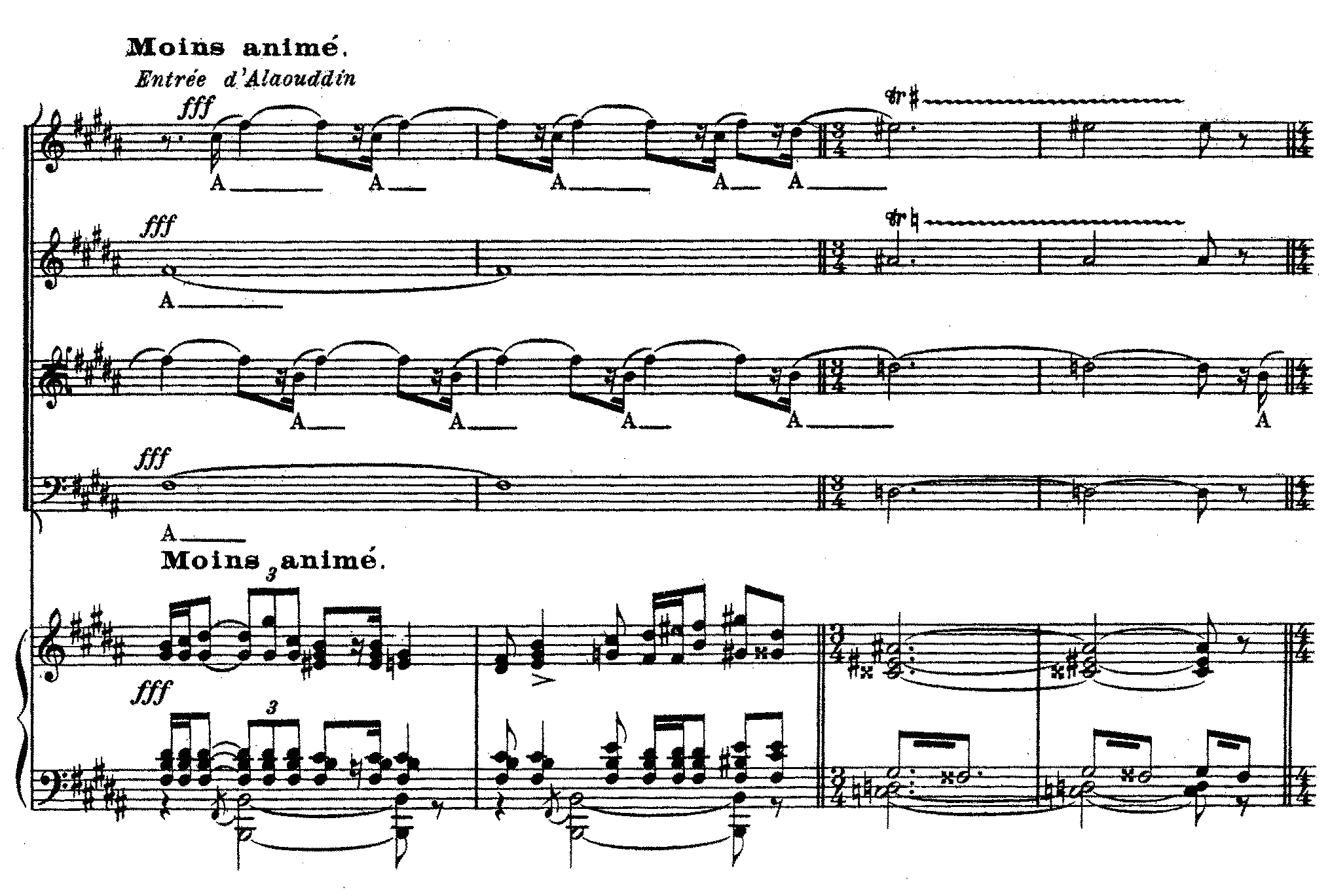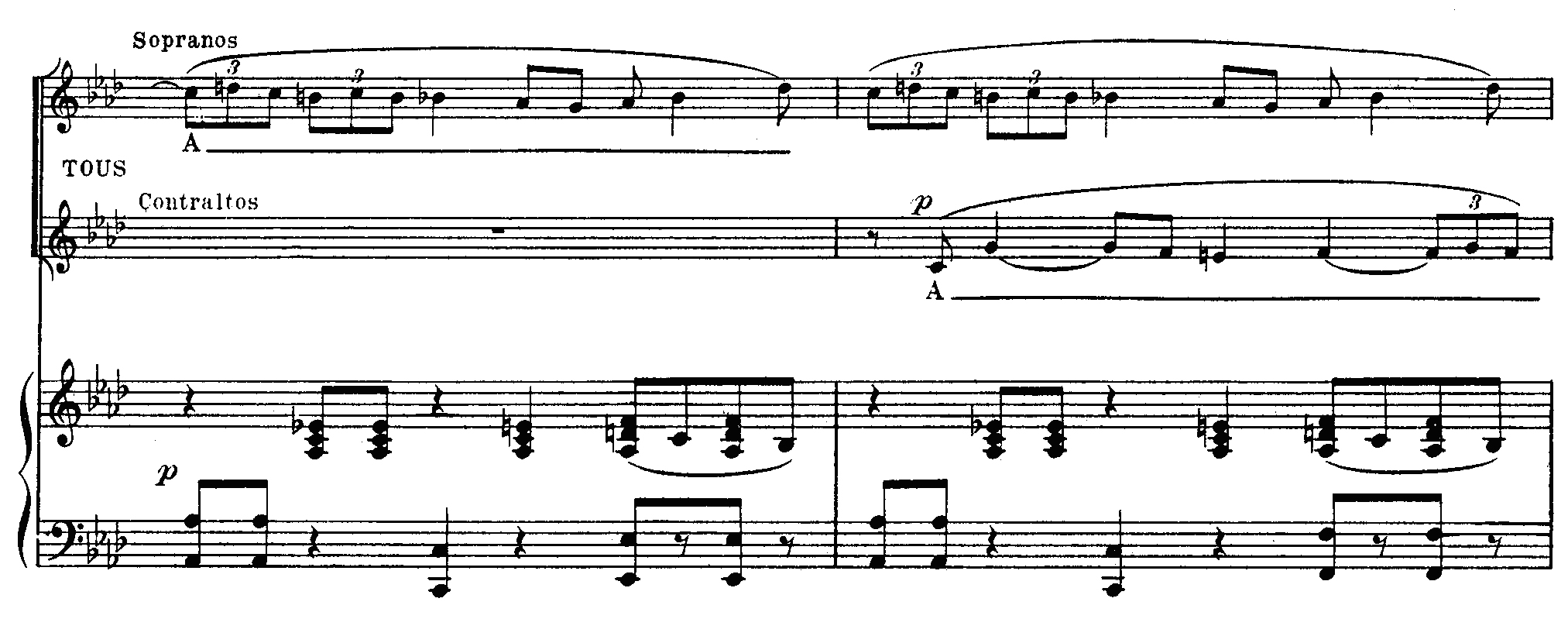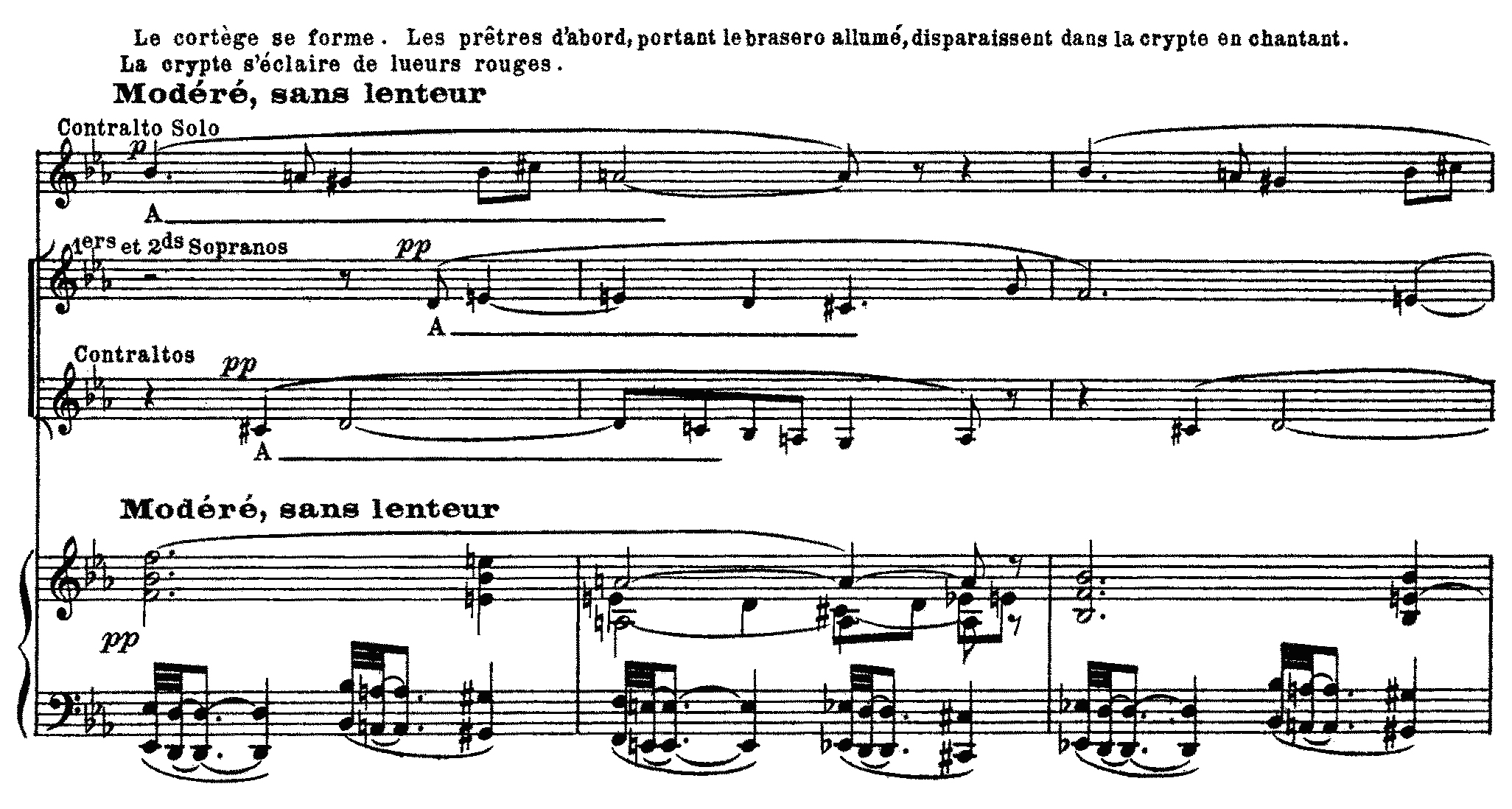Dramatic Vocalise Database
Albert Roussel (1869–1937)
Padmâvatî, Op. 18 (1913–18)
Following the success of Évocations, Jacques Rouché, Director of the Théâtre des Arts in Paris, commissioned Roussel to compose a ballet, Le Festin de l’araignée (1913). Rouché celebrated his subsequent appointment as Director of the Paris Opéra by offering Roussel another commission, this time an opera. Roussel, however, was determined not to compose in the traditional, grand-operatic style. Firstly, he was adamant that an opera’s symphonic development should assist the plot, not merely provide accompanimental support. Secondly, he wanted to resuscitate the genre of opéra-ballet by integrating dance into the dramatic action.1
With memories of his visit to India still fresh, Roussel asked his friend Louis Laloy to write a libretto based on the story of Padmâvatî, legendary thirteenth-century Queen of Tchitor.2 After interruption by the First World War, the work was completed in 1918 and first performed at the Paris Opéra on 1 June 1923. The music is heavily, but not exotically, scored. Although Roussel included Hindu scales, he did not wish to imitate Indian music, and was content merely to narrate the dramatic story of Padmâvatî as he imagined it from his memories of Tchitor.3
Act 1 opens with a magnificent orchestral passage, full of tension and foreboding, depicting Tchitor encircled by its enemies in somber veiled expectation. However, when the curtain rises, the situation suddenly seems to be coming to a head: Alaouddin, Sultan of the Mogols, and long-standing enemy, has concluded a truce with Ratan-Sen, king of Tchitor. The crowd is far from convinced of the Sultan’s sincerity. Immediately preceding the Sultan’s arrival, the crowd expresses their fear and apprehension through wordless vocalization. At the moment of Alaouddin’s entrance, the chorus, indicated in the score as “Le peuple,” builds to an anxious climax.

Roussel, Padmâvatî, act 1, scene 2
4Ratan-Sen wants to have the alliance ceremony over as soon as possible, but the Sultan asks to see the marvels of Tchitor first. This is a pretext for a suite of dances in differing styles, rich in both rhythms and tone colors. First come the warriors, then the female slaves, followed by the women of the palace. For the last, a wordless chorus joins the orchestra in a long crescendo. This extended passage of 193 measures (pp. 61–83 in the piano-vocal score) of continuous wordless vocalization, with thematic development, takes Debussy’s symphonic model, combined with Ravel’s application to ballet, and synthesizes it all once again for the operatic stage. The conjunct motion of the vocal lines, the wavering triplet figures, and the succulence of the rich exotic harmonies seem to be reminiscent of Debussy’s melodic contour and Schmitt’s exotic barbarism, with hints of d’Indy’s Fervaal in the contrapuntal development.


Roussel, Padmâvatî, act 1, scene 2
5Alaouddin, still not satisfied, wants to see Padmâvatî, the queen and Ratan-Sen’s wife, whose beauty is famously like no other. Ratan-Sen calls for the queen, who appears on a balcony while Nakamti, a young girl, and then the crowd, sing of the queen’s glory. At the Sultan’s request, and with the King’s permission, Padmâvatî lifts her veil and Alaouddin almost faints. He then declares that he is too overcome to go through with the alliance ceremony and announces upon taking his leave that he will return the following day.
A Brahman who had accompanied the Sultan remains behind. Once Alaouddin is safely beyond the walls of Tchitor, the Brahman delivers the Sultan’s ultimatum: If Padmâvatî is not handed over to him, he will seize Tchitor. Exasperated by the ultimatum, the crowd falls on the Brahman, putting him to death. The queen appears, deploring the sacrilege and asserting that nothing, not even death, could ever separate her from Ratan-Sen. An offstage chorus accompanies her words, followed by a call to arms from the men’s chorus [“Aux armes!”], and wordless lamentation in the women’s chorus.
Act 2 is set inside Shiva’s temple. The priests are praying; Padmâvatî joins in to implore salvation for the city. Ratan-Sen appears—he has been wounded in combat and tells Padmâvatî that all hope is lost. He has managed to obtain a truce until dawn and tries to persuade his wife to submit to Alaouddin to spare the life of the citizens. Padmâvatî refuses in a long, pathetic duet, asserting that neither of them have the right to break the bond uniting them. At the end she kills Ratan-Sen with a dagger and summons the priests who, in accordance with Hindu custom, must prepare the funeral pyre where she will be immolated by her husband’s side.
The final scene—Cérémonie funèbre—begins with wordless sopranos announcing the melodic idea that permeates the musical fabric until the end of the opera.

Roussel, Padmâvatî, act 2, scene 3
6The opening notes of the theme are taken from the head motive of the melody in act 1, scene 2, the original extended vocalization passage. The following triplet figure also reappears, now as countersubject to the chromatically-descending, lamenting melody.
The priests intone an incantation as the chorus continues its wordless lament. The funeral procession forms. First, the priests carrying a lighted brazier disappear into the crypt, chanting. The crypt is lit up by a red glow. The priests carrying the king’s body then enter. At this moment the solo contralto restates the original theme.

Roussel, Padmâvatî, act 2, scene 3
7Padmâvatî then follows. The pyre flickers in the crypt. Just as she enters, Padmâvatî shudders in fear. The Sultan Alaouddin appears at the door. The women, until then prostrate on the ground, rise to their feet and try to flee. Alaouddin, with a gesture, stops his soldiers on the threshold of the temple and then watches motionless as smoke rises from the crypt.8
The three scenes in this opéra-ballet that heavily rely on dramatic vocalization project a similar atmosphere. In the first, the chorus exhibits fear, alarm, and anxiety; the second expresses a call to arms and a simultaneous lamenting plaint; the third scene with the funeral pyre, based on previously introduced melodic themes, expresses lamentation once again. The adoption of dramatic vocalization in this work far surpasses previous uses of this technique, in effect taking both Debussy and Ravel’s symphonic ideal and pushing it to the utmost limit within a dramatic context.
(Nauman 2009, 110–16)
Examples | Comments |